
Not just as a side dish, but at times with tea or with alcohol, and of course as the finishing touch to Ochazuke, pickles are an indispensable part of meals. People have a long history of making pickles, with written records existing as far back as the time of the Yamato Imperial Court, though what existed at that time were no varieties beyond basic salted pickles. Rather than specifically attempting to make "pickles," though, the idea behind what arose during this time period was merely to attempt to preserve vegetables through salting.
Pickles are not limited solely to salted pickles, however. Following the Nara Period, with the appearance of miso as well as various types of liquors, there came about a multitude of methods to preserve various vegetables. However despite the expansion of pickling options, pickles were still not available for the common people, being a preserved food reserved for nobles and monks. With the advent of the Heian Period, pickles finally began to permeate into the lives of ordinary people, however there was still no idea like we have now of "pickles" as a unique food item. Rather, they were looked at as " pickled vegetables" or "(salt) soaked vegetables." However, different image or not, they still became a common side dish during this time.
◇
The first major explicit development in pickles occurred during the Muromachi Period. Interestingly, at first glance, this development that led into pickles started out as something completely different – incense, to be precise. There was at that time a sort of game called Monkou, which involved naming the particular wood being burned through only it's smell. Even today, in a manner similar to flower arranging and tea ceremony, there are schools teaching the old methods of this incense burning tradition. It was during the Muromachi Period, then, that this Monkou first began to have notable popularity.
◇
When people speak of pickles, most people's first image is like that of takuan, pickled daikon radish. If you recall the intense smell also carried by takuan, it is not too much a stretch of the imagination to see the relationship between it and the practice of Monkou. Nevertheless, let us explain it more clearly. The truth is that there are a great number of varieties of wood used for Monkou, which can be quite a daunting task for the amateur. Were the player not someone who had truly devoted themselves to the study of the practice, correctly naming the type of wood verges on the impossible, to say nothing of the uninviting. Furthermore, given the sheer number of different types of wood used during even a single event, even someone with a trained and sensitive nose could easily become overwhelmed. If one suddenly introduces the strong smell of pickles, it acts as a sort of palate cleanser for the nose, in much the same way bread is used between glasses at a wine tasting. However during the Muromachi Period, rather than the takuan we know today, what was used was daikon radish pickled with miso, as "true" takuan would unfortunately not exist until the Edo Period.
As to why during that time pickles were known as "pickled vegetables," this too has to do with the practice of Monkou. However beyond just saying "it was because of Monkou," there is actually a hypothesis that suggests that during Monkou, it was actually miso that was used, since miso was known as a "high-fragrance seasoning." However whether or not that is correct remains somewhat unclear at this time.
In contrast to the older Japanese terms for "pickles," (香の物 kounomono and 香々 kouko) there was also another term お新香 oshinko which was created during the Edo Period in order to differentiate standard pickles from a type made rapidly overnight. However over time, the distinction behind the name was lost and now the term has come to stand as the nickname for the category of pickles as a whole.
By the way, with regard to the terms for varieties of takuan pickled radish, there is also one known as onedzuke. If one writes "pickled radish" 大根漬け in Chinese characters, onedzuke appears to be a direct reading, however in actuality, it was something of a marketing ploy to make pickled radish more appealing to the elegant society of high-class samurai and lords. Despite this, the attempt ultimately just lead to it becoming a part of more feminine speech.
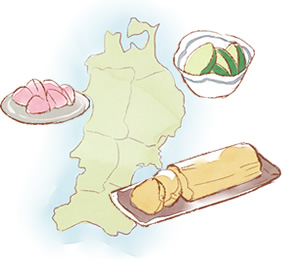
The best places in Japan for making pickles are the Tohoku and Hokuriku regions. When you see written "bad land," it of course carries a negative connotation, however this is not so much true as it is that, even since ancient times, there have been places that are suited for making pickles and places that are not. To bring back some of the history above, the origin of pickles is of course linked with the desire of people to preserve food, specifically vegetables. This is especially true in certain rural areas where weather such as heavy snow makes certain types of agriculture more untenable, therefore leading to vegetable shortages. Therefore, in order for vegetables to remain edible even through long, harsh winters, pickling was devised, leading to the ancestors of our modern pickles. Over time, people got tired of constantly eating the same pickles made only with salt, and this led to the development of myriad pickles methods, such as ones using miso, wasabi, or byproducts from sake distilling, just to name a few.
◇
For these reasons, areas that tend to excel in pickle production also tend to be those with harsher climates, as largely represented by the variety of pickles from the regions of Tohoku and Hokuriku. Speaking of these regions, there are many areas within them that, due to heavy winter snowfalls, would often become unusable. Of course, winter itself does preclude harvesting any sort of crops, and indeed most farm work in total. However given the extreme poverty in many parts of feudal Japan, there was often no rest given simply because the weather became bad, as can been seen in many stories of the poor farmers of Tohoku, written by migrants from various parts of Japan who ended up there.
There are also famous pickles from areas known for harsh weather that lie outside the regions of Tohoku and Hokuriku as well, though, for example those from Nozawa. This variety which hails from the Nagano region of Japan has become popular over the years after being spread by pickle-lovers or even just tourists and travel enthusiasts who picked them up at Nagano area department stores during special seasons. It is again a unique taste produced by the climate conditions endemic to the region.
To speak of places that are less given to the production of pickles, Shikoku likely tops the list. Particularly around the area of the Seto Inland Sea, there is no history of famous pickles. This is largely due to Shikoku's more mild climate, given its position on the much gentler Seto Inland Sea, versus bearing the full brunt of the North Pacific. Even though snow is possible during winter, crop production remains largely possible to due the position and richness of the soil. Furthermore, due to the calmness of the Seto Inland Sea, conditions for fishing are almost always favorable, leading to little concern for finding methods of preserving fish, either. Because of these factors, even going into the past, Shikoku has never been a place known for its pickles, despite being a place blessed with excellent land.
However even within the same general region along the Seto Inland Sea, the situation is a little bit different on the side of the island of Honshu. This is due to the Honshu side's cold winters on the adjoining area of San'in. This led to at least some development of pickles, which while still not particularly significant, is at least more present than that on Shikoku.
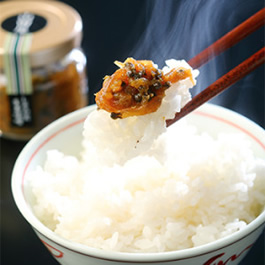
Even with a similar climate to much of Shikoku, from the island of Kyushu comes another variety of fine pickles, this time made using miso or soy sauce to season them. These came about through heat, rather than just warmth. By this I mean that food is much more likely to spoil in hot conditions than in cold. In such a climate, the normal process of fermentation using salt simply takes too much time, therefore instead, soy sauce or miso were used. This allowed the food to be kept safe long enough for it to ferment properly; the process was suited to the region. In this it is possible to see yet again the intelligence and ingenuity of those generations that came before us.
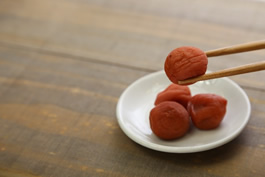
There are also areas which became known for making pickles despite possessing few or none of the standard geographic features, though. Key among these is Kyoto. Of course, the valley where Kyoto is situated means winters can become quite severe. Coupled with the long distance to the sea, there would seem to be ample conditions for needing to preserve food.
Stepping away from geography, though, it was mentioned in the history section that pickles developed greatly during the Muromachi Period, especially when combined with the then-trendy practice of Monkou. At that time, Kyoto was the capital of the Imperial Court and thus also the center of the aristocracy and the culture that made Monkou such a prominent pastime. Due to its position as the capital, it was natural that this interest in culture was not only confined to the nobility, but also trickled down to the common folk. In other words, in Kyoto pickles, which had always simply had the meaning of "preserved food," were suddenly elevated into a space of taste and culture.
In addition, as the capital, Kyoto would suffer the most damage during any time of war, therefore the people of Kyoto looked to the past and sought to live frugally in those times. Pickles suited this ethos remarkably well, and thus the cultural temperament of the city drove the development of pickles there even further. Thus even now, Kyoto pickles become a cultural ambassador for all of Japan. I would image that more than a few of you, readers, have been to Kyoto and brought back pickles as a souvenir for someone.
◇
By the way, looking back to different regions, there are some special varieties of pickles developed only in certain areas, such as Hokuriku pickled herring, Tokai pickled wasabi, and Hokkaido Matsumae pickles just to name a few. These all came about due to their respective regions being major production centers, where the commonly used materials were available right to hand, which appears to have also been an important element in a region's development of pickles.
In the process of making pickles by fermentation, temperature is a vital element. In actuality, it is better to pickle things at low temperatures, which will lead to a better tasting final product. This is another large component of why the best pickles tend to come from colder regions such as Tohoku and Hokuriku. In warmer temperatures, the aim is not so much to "pickle" something as it is to "make it not rot." In other words, temperature and the chance of making good pickles are inversely proportional. Of course, it is possible to make pickles in a hot region, however it requires salt with an especially high antibacterial effect to be applied in a cold environment in order for the pickles to properly ferment without spoiling. If this is done improperly however, one can easily end up with unappetizing pickles that taste only of salt. This is why it is so rare for famous pickle producing cultures to spring up in hot regions.
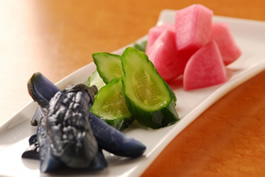
In the past when transportation did not exist like now, when there was no internet, no television, no radio, no telephone, before there was even any mail, there were only foot couriers, and it was just understood that anything sent would take days, if not longer, to reach its destination. At that time, all the farmers in a given area would be growing essentially all the same crops, after all there was no equivalent to the modern greenhouse available. This was an era when even what kind of crops were being grown in what region was big news for the likes of itinerant monks and merchants who roamed the country. This type of interaction could happen, for example, at the harvest festivals which would occur following the start of the off-season, where a farmer might say, "This year we had an excellent eggplant harvest, please take one with you." As a farmer, this would become a representative for you, because of course everyone in the village would be growing essentially the same eggplant, therefore to say you have had a good harvest means the village has as well. This way you could also avoid being overburdened with too many eggplants. The situation was, of course, the same for pickles.
◇
With the notable exception of instant-pickled overnight pickles, pickles are of course a fermented food. During the fermentation process, though, there is a significant impact from naturally occurring microbes, specifically a type of lactic acid bacteria. These bacteria, for any food that is being turned into pickles, play a major role in both accelerating the processes of fermentation and also by giving the pickles their distinctive taste. Moreover, fascinatingly, much as all people have unique personalities, there are also "personalities" to these bacteria. In other words, if the location is different, the bacteria will also differ, and thus the taste of the pickles will change accordingly. This is also not limited to lactic acid bacteria, therefore the way the taste of pickles changes as one moves from region to region is directly correlated to the types of bacteria that can be found there. In addition, using salt seasoning versus miso seasoning, whether a particular family likes spicy seasonings or not – all of these will vary along with the region one examines, and the flavor of the pickles will change along with them. Even if you took the exact same eggplants, for example, gave them to 10 different people from 10 different households, and had them turn them all into pickles, you would end up with 10 unique flavors, each representing the pride of its home. These differences of regional taste can always make for lively conversation!
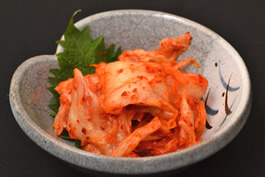
In neighboring Korea they call it kimchi; in Germany it's sauerkraut; pickles are as much a culinary phenomenon of the world as they are one of Japan. Despite the world's affinity for them, however, the truth is that pickles are actually of fairly low nutritional value. Of course, in the case of pickled vegetables, the nutrients that were originally there remain, and in the case of fish they persist as well, so it is not as if pickles have no nutritional value. However the fact remains that some will be lost along with the freshness of the original unpickled item, compared to which the nutrition of pickles is necessarily somewhat lower. That said, pickles have long been and continued to be loved by many all across the world. Why is this? The secret is all in that irreplicable flavor.
◇
As a matter of fact, the taste of most pickles is able to enhance a person's appetite. In addition, they also play an important role as a palate cleanser between servings. In the past, the average diet was much less diverse than it is now; people ate what was immediately to hand, which was dictated largely by their region and the season, resulting in a fairly monotonous diet for the most part. However to be able to work well, it is absolutely essential that a person be well-fed. Pickles played a large role in ensuring a healthier diet for larger numbers of people. Ancient people, though, unaware of this, were simply pursuing more food and better taste by means of test tasting and trial-and-error. Today, this has left us with a vast lineage of pickle varieties to choose from. By and large, if you order a set meal from a restaurant, you will find set in the corner a dish of pickles. A majority of people would just see them as "those other things," however they also serve a genuine purpose as an appetizer and a palate cleanser. The next time you eat pickles, think about the value of life and of the ingenuity of our ancestors…and eat up!


















